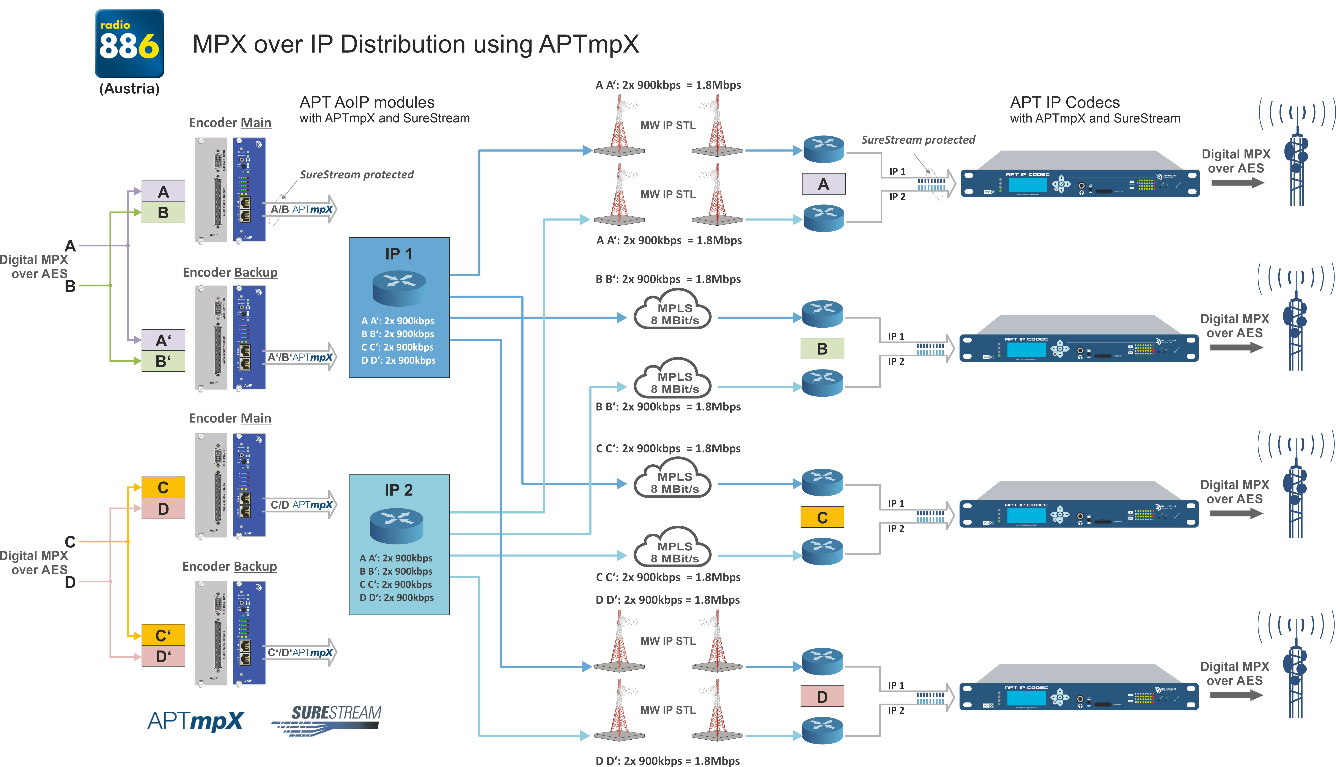Simplifying the signal chain by sending the finalized MPX signal from the studio to the transmitter network is more attractive than transporting the discrete signal components because the savings in hardware for sound processors and stereo encoders are exceptionally high as these devices are only needed once in the entire signal chain.
The particular challenges are providing the high network bandwidth required and preserving the fragile MPX's technical integrity.
The APTmpX compression algorithm reduces the wideband MPX signal to the bandwidth of a baseband audio signal, being either 300/400/600 or 900 kbps, by maintaining the highest signal fidelity at the lowest bit rate with the most outstanding resilience to impairments during transmission.
- APTmpX can be used at the lowest possible bitrate without damaging the sound or the generated stereo image.
- APTmpX is transmitted as a robust RTP packet, and the loss of a packet only affects the content of the affected packet (not a group of packets).
- Transmission latency and jitter buffer requirements at the receiver are as low as those of discrete signal transmission.
APTmpX is one format among many in an APT audio codec. Therefore, switching from the discrete transmission to composite MPX transmission is completed by selecting the APTmpX format from the list of algorithms, thus establishing the cost savings described above.



